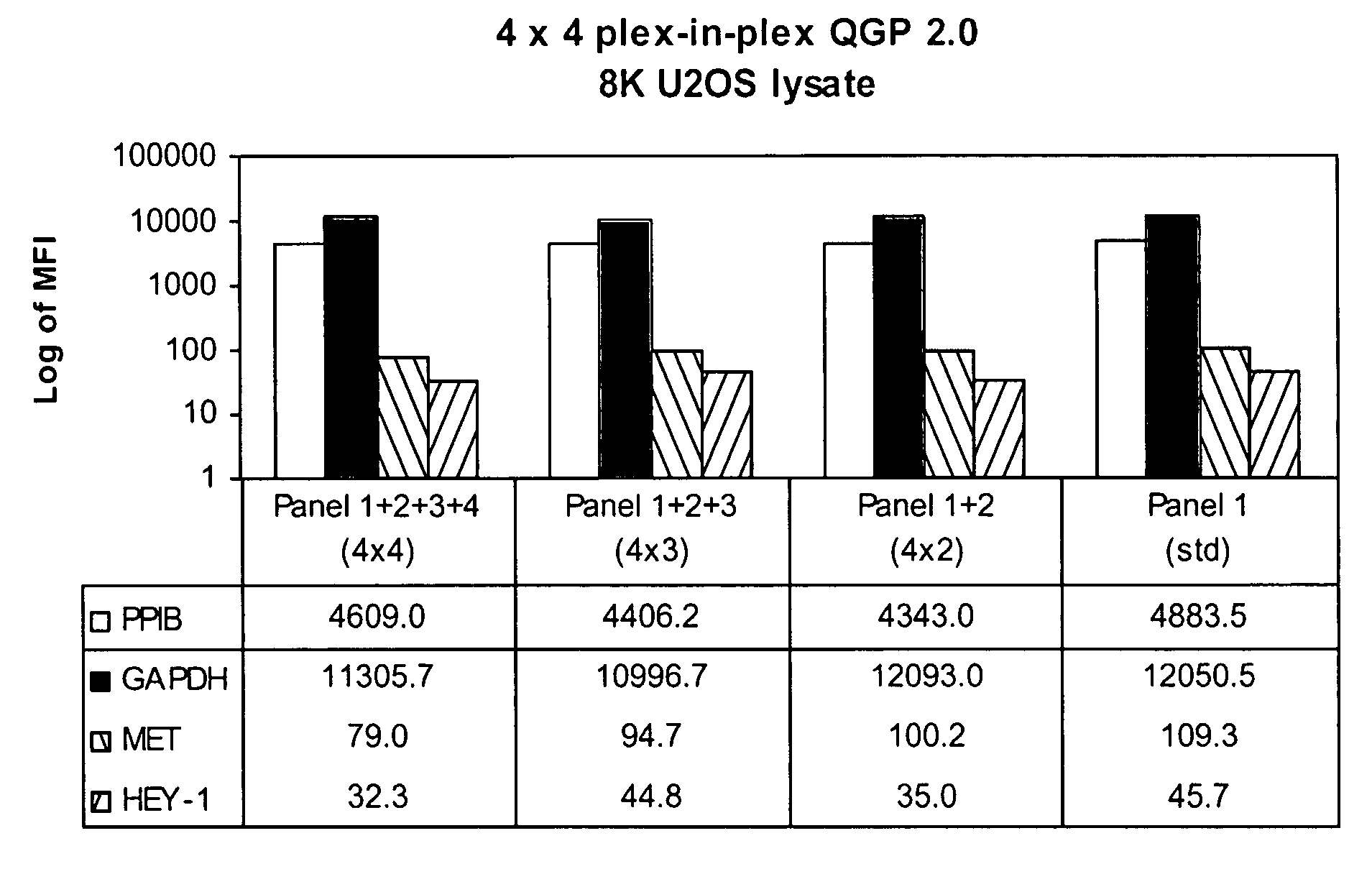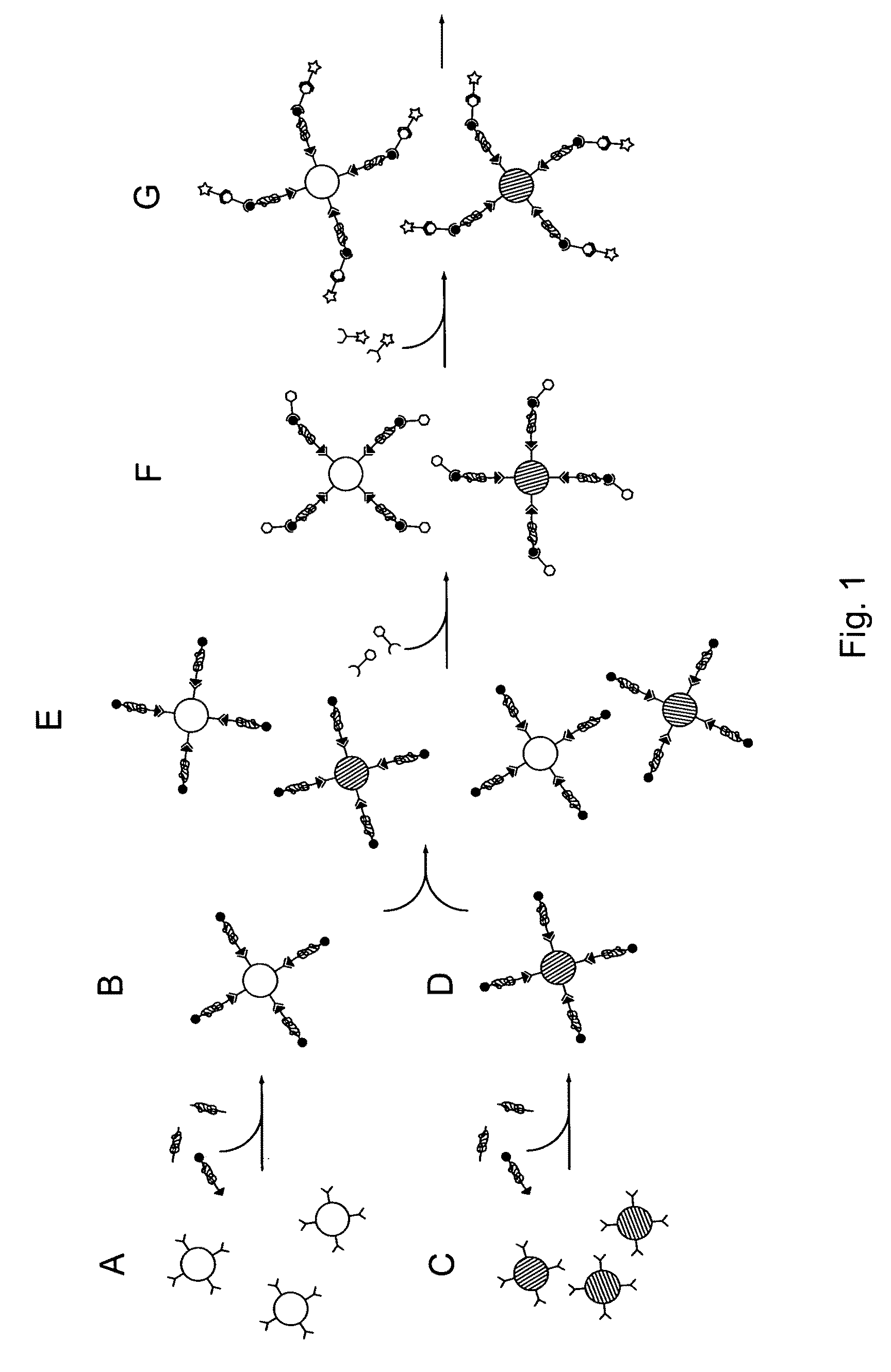Highly multiplexed particle-based assays
a particle-based assay and high-multiplication technology, applied in the field of analyte detection, can solve the problems of prohibitively high cost of reagents used to detect analytes and limited use of such particle-based assays for high-throughput applications, and achieve the effect of high-multiplication
- Summary
- Abstract
- Description
- Claims
- Application Information
AI Technical Summary
Benefits of technology
Problems solved by technology
Method used
Image
Examples
example 1
[0196]The following sets forth a series of experiments that demonstrate detection of four mRNAs from cell lysate in a bDNA assay using from one to four microsphere populations (or panels) having four distinguishable microsphere subsets each. Panel 1, for example, includes four different sets of fluorescently color-coded beads (Luminex Corp.), each with a different polynucleotide capture probe. Each target mRNA (PPIB, GAPDH, MET, and HEY-1) is thus captured to a different subset of beads. Panels 2, 3, and 4 each contain four different subsets of beads (for a total of 16 distinguishable bead subsets in Panels 1-4), but each panel contains capture probe oligos that are the same as those of Panel 1. Each panel (population) of beads is used to capture target nucleic acids. The panels are then combined in various combinations and processed as outlined above for bDNA assays (see, e.g., FIG. 4 Panels A and D).
[0197]As shown in FIG. 7, quantitation of the four nucleic...
example 2
[0199]The following demonstrates detection of eight RNAs in a multiplex assay using eight microsphere populations having eight distinguishable microsphere subsets each. 40,000 copies of in vitro transcribed RNAs (RELA, UGT1A9, ABCC2, CSF2, IL-1b, GAPD, PPIB and bACT) were added to each well of a 384 well plate containing bead panel 1, 2, 3, 4, 5, 6, 7 or 8 and containing the corresponding 8-plex probe set (CEs, LEs, and BPs for the eight target RNAs). Each panel contains eight different color coded beads (for a total of 64 different distinguishable bead subsets in panels 1-8). However, each panel contains the same eight zip code oligos on the beads, as illustrated in FIG. 4 Panel B. After overnight incubation, all eight panels were combined into a single plate and processed according to the workflow illustrated in FIG. 4 Panel D, except that magnetic separation instead of filter separation was employed. (Magnetic beads were employed to facilitate handling.)
[0...
PUM
| Property | Measurement | Unit |
|---|---|---|
| diameter | aaaaa | aaaaa |
| diameter | aaaaa | aaaaa |
| diameter | aaaaa | aaaaa |
Abstract
Description
Claims
Application Information
 Login to View More
Login to View More - R&D
- Intellectual Property
- Life Sciences
- Materials
- Tech Scout
- Unparalleled Data Quality
- Higher Quality Content
- 60% Fewer Hallucinations
Browse by: Latest US Patents, China's latest patents, Technical Efficacy Thesaurus, Application Domain, Technology Topic, Popular Technical Reports.
© 2025 PatSnap. All rights reserved.Legal|Privacy policy|Modern Slavery Act Transparency Statement|Sitemap|About US| Contact US: help@patsnap.com



